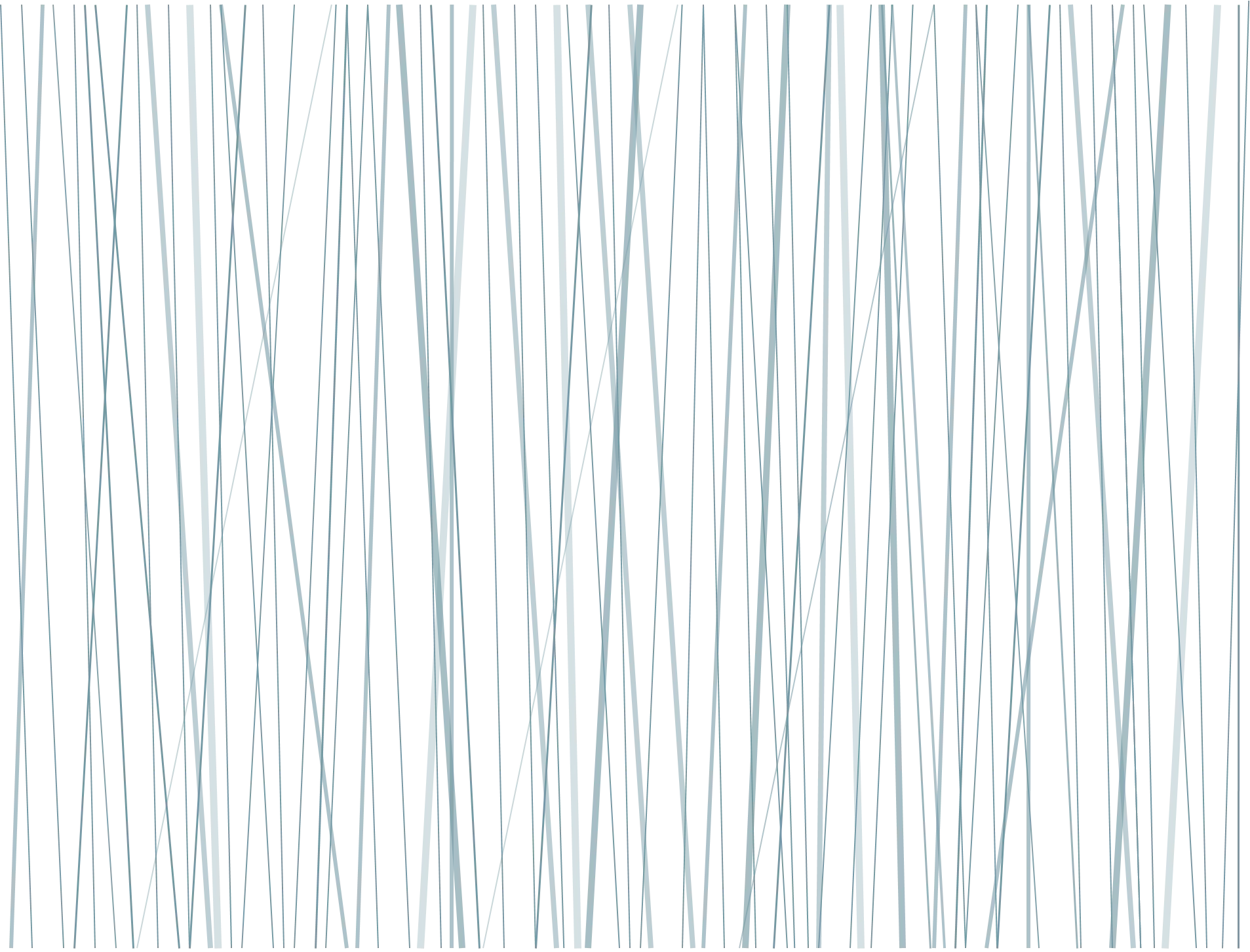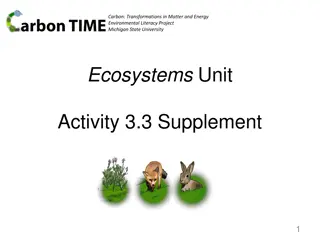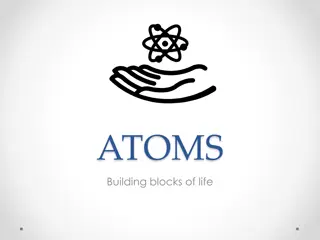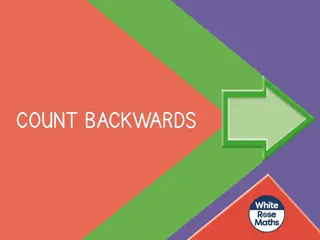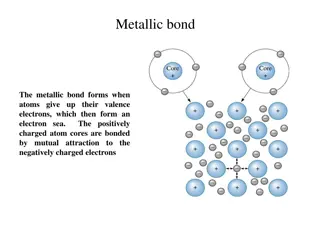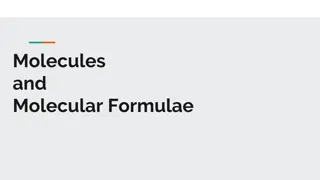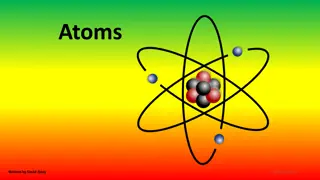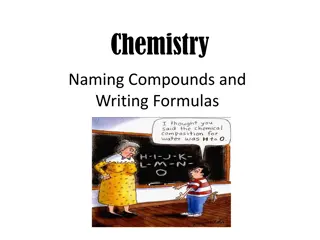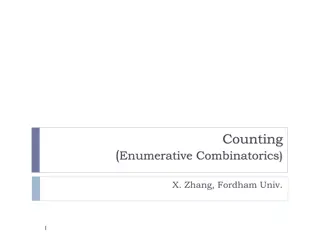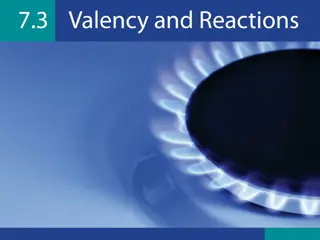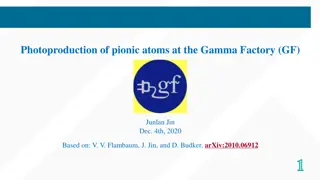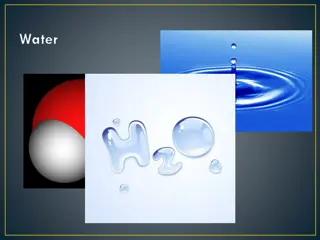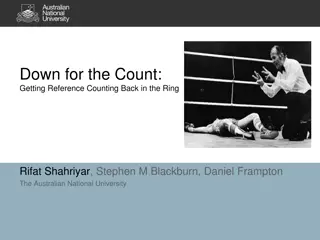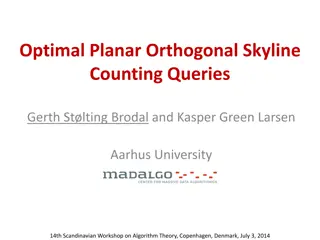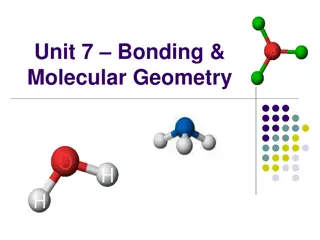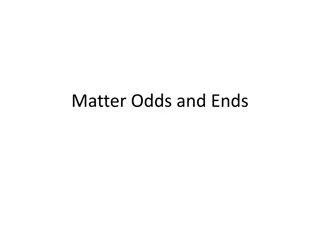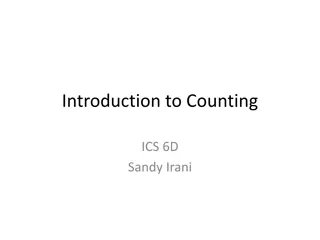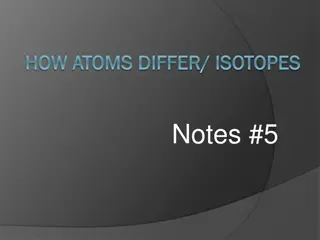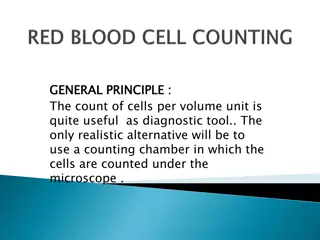1. Chemical Formulas 2. Counting Atoms
Chemical formulas provide a shorthand way to represent molecules and compounds, with symbols representing elements and subscripts indicating the number of atoms. By understanding how to interpret and write chemical formulas, you can count the atoms in a molecule or compound accurately. This visual guide illustrates different examples and rules for reading and writing chemical formulas, along with practice questions and answers to help reinforce your understanding.
Download Presentation

Please find below an Image/Link to download the presentation.
The content on the website is provided AS IS for your information and personal use only. It may not be sold, licensed, or shared on other websites without obtaining consent from the author.If you encounter any issues during the download, it is possible that the publisher has removed the file from their server.
You are allowed to download the files provided on this website for personal or commercial use, subject to the condition that they are used lawfully. All files are the property of their respective owners.
The content on the website is provided AS IS for your information and personal use only. It may not be sold, licensed, or shared on other websites without obtaining consent from the author.
E N D
Presentation Transcript
1. Chemical Formulas 2. Counting Atoms How do we make larger particles than atoms?
Chemical Formulas- Shorthand way to write a chemical molecule or compound SYMBOL-shorthand for one atom of an element SUBSCRIPT- Lower right corner (behind the symbol) Tells you number or atoms for that element If there is no subscript-it means one atom 2O2 COEFFICIENT- In front of formula Tells you how many molecules you have All elements are multiplied by that number
Chemical Formula Examples- Ways you may see molecules/compounds written Ba 1. Ba means Barium- If there is no subscript you only have one atom Cl2 2. There is a subscript of 2 so this means: you have 2 Chlorine atoms 4b. There is a subscript of 2 behind the H so there are 2 Hydrogen Atoms. How many atoms of Sulfur? How many atoms of Oxygen? H2SO4
Chemical Formula Examples- Ways you may see molecules/compounds written 4a. There is a coefficient of 2 in front of the whole formula. This means all the elements in the formula are multiplied by 2 2NaSO4 NaSO4 + NaSO4 3. When you have a subscript outside parenthesis, you multiply each element INSIDE them by that subscript Ca3(PO4) 2
Examples to start with: How many molecules? 2 molecules How many Hydrogens? Oxygens? H=4 O=2 2H2O 3Na2SO4 How many molecules? 3 molecules How many Sodiums? Sulfurs? Oxygens? Na=6 S=3 O=12 4Pb(NO3)2 How many molecules? 4 molecules How many Leads? Nitrogens? Oxygens? Pb=4 N=8 O= 24
Answers to worksheet K2CO3 K=2 C=1 O=3 Total=6 NH4C2H3O2 N=1 H=7 C=2 O=2 Total=12 Ba3(PO4)2 Ba=3 P=2 O=8 Total=13 4Al2(CO3)3 Al=8 C=12 O=36 Total=56 Na2CrO4 Na=2 Cr=1 O=4 Total: 7 3CaCl2 Ca=3 Cl=6 Total: 9 2(NH4)2Cr2O7 N=4 H=16 Cr=4 O=14 Total: 38 Pb(NO3)2 Pb=1 N=2 O=6 Total: 9
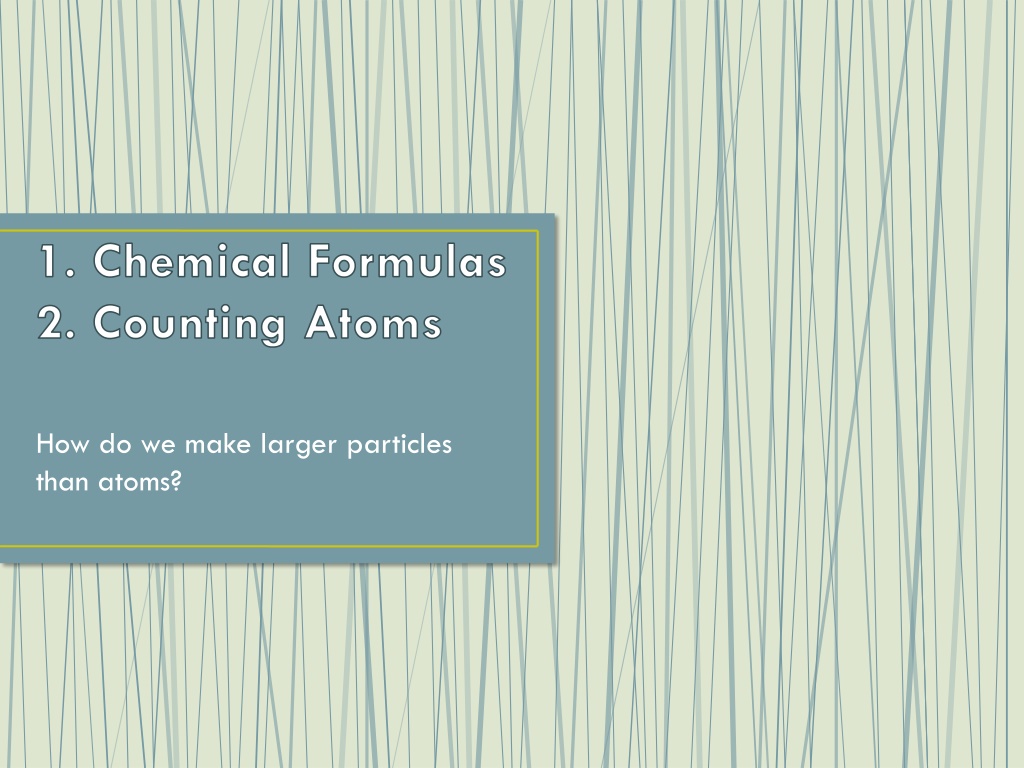
 undefined
undefined